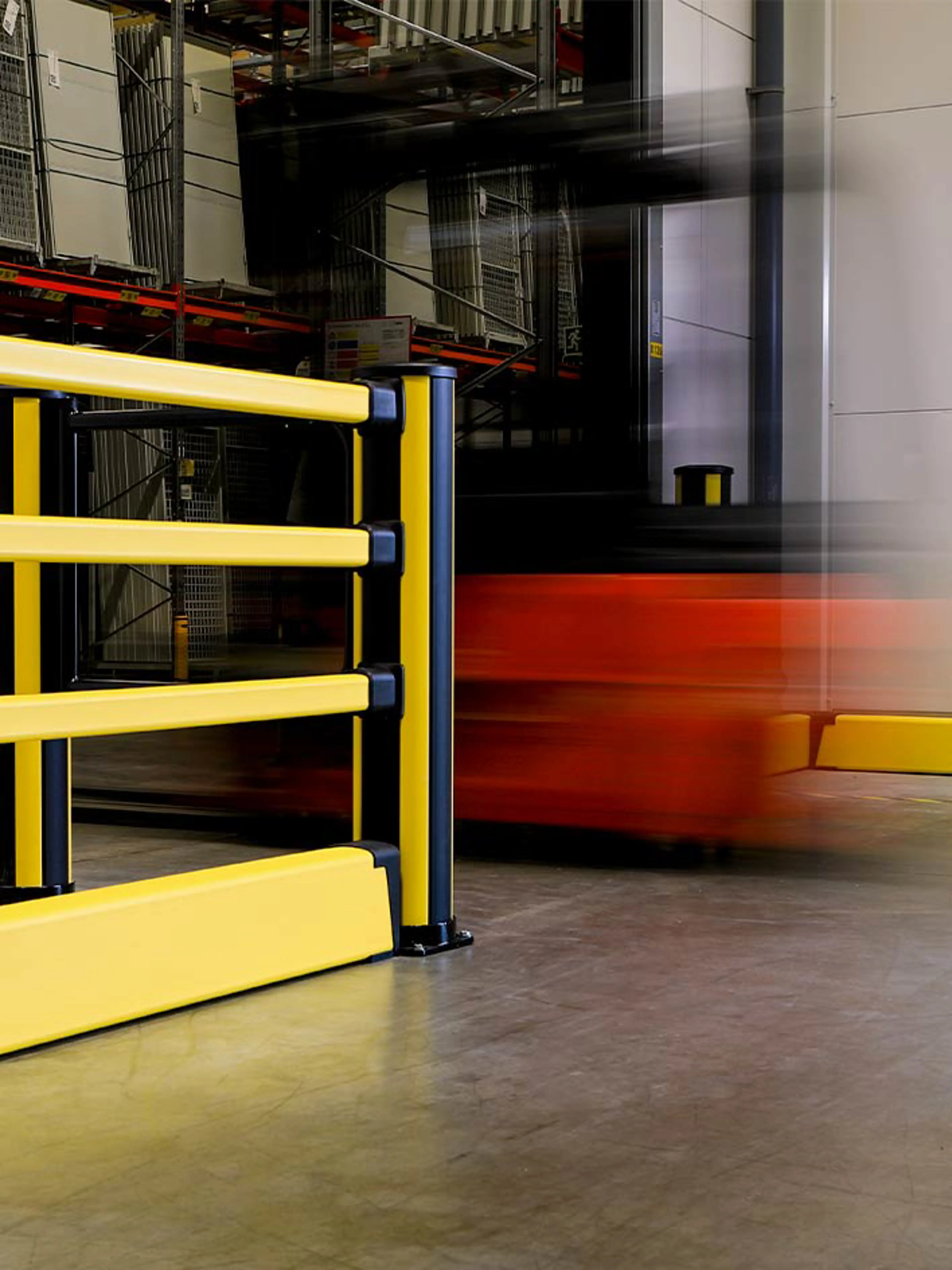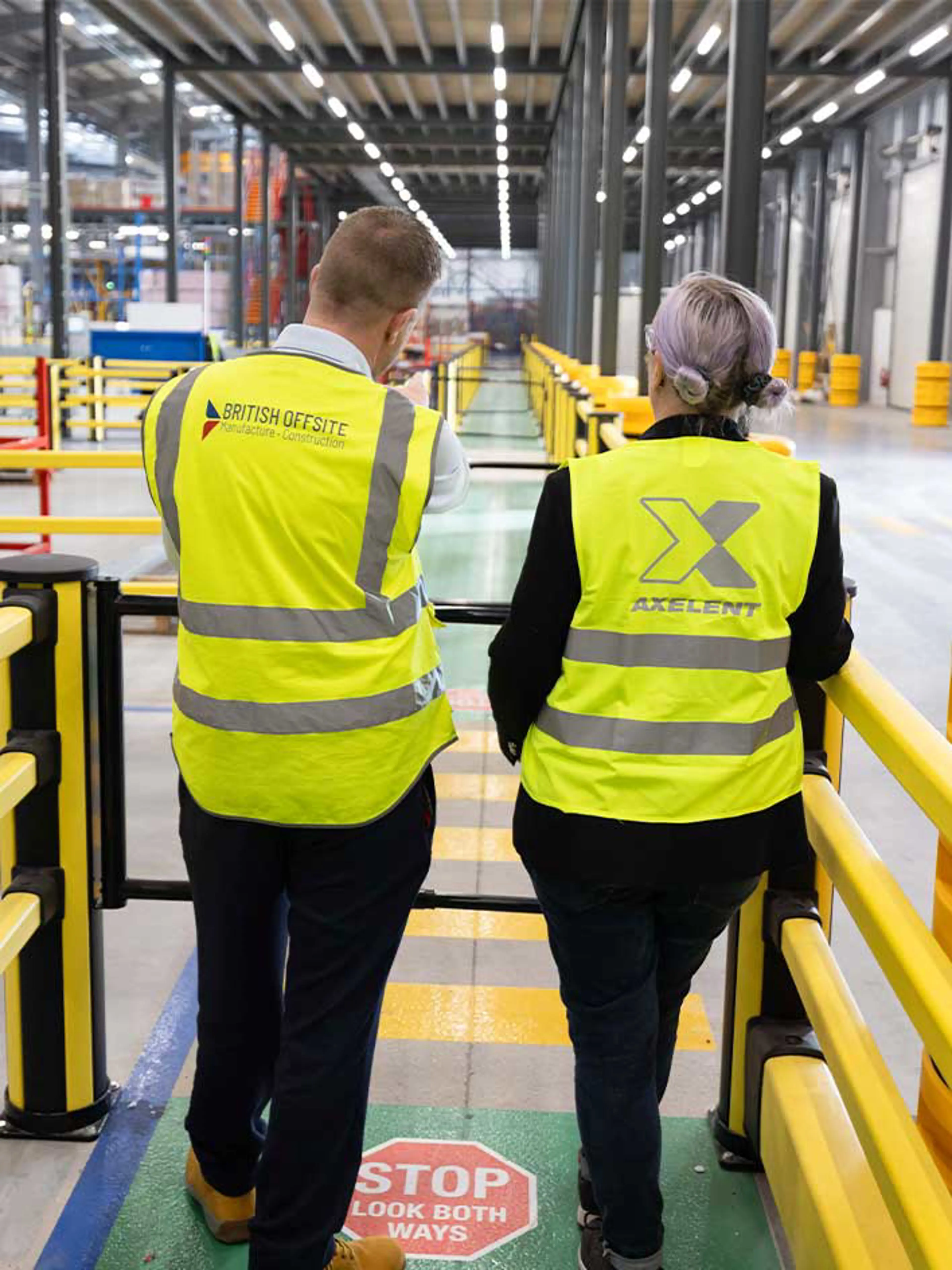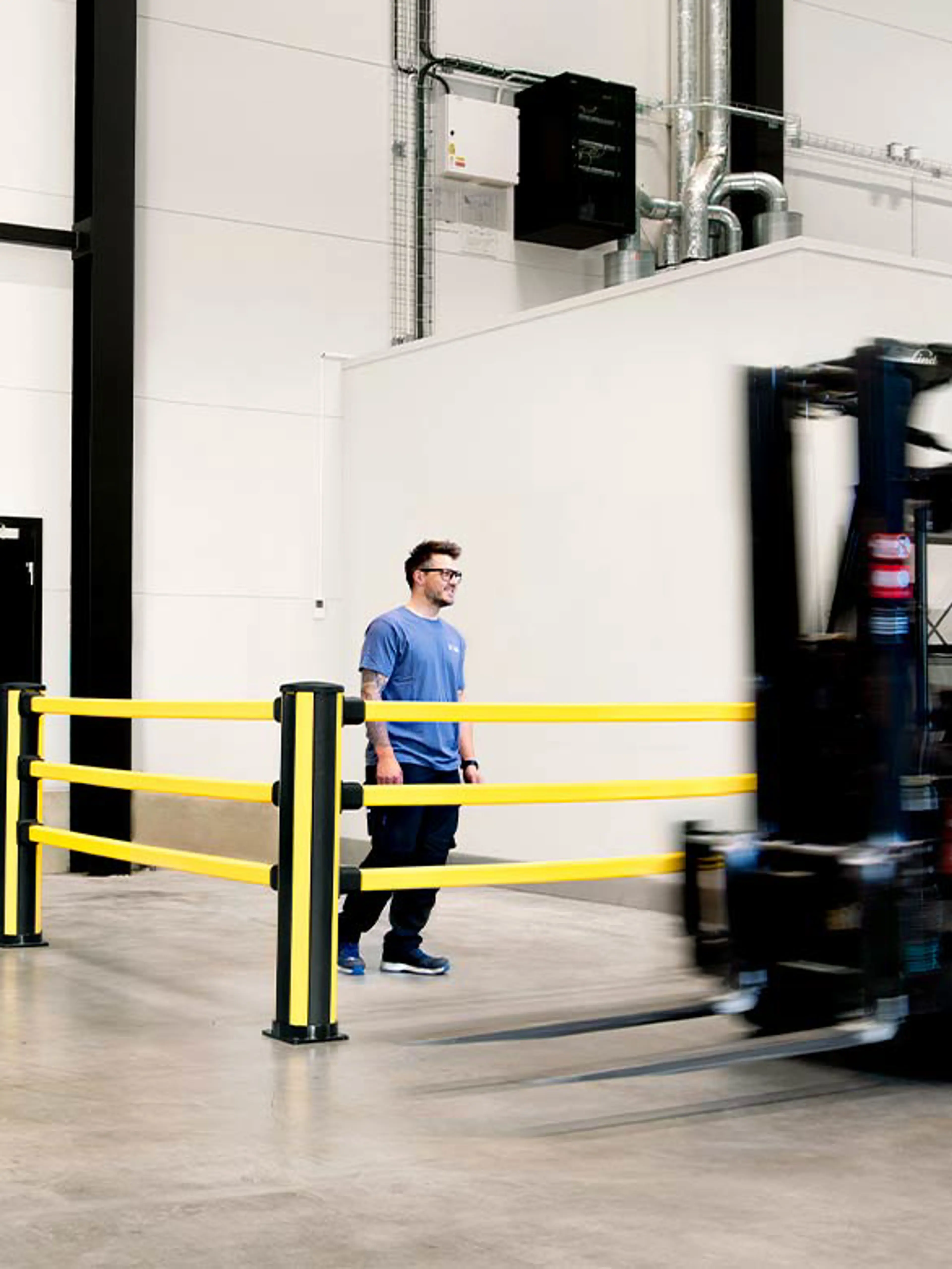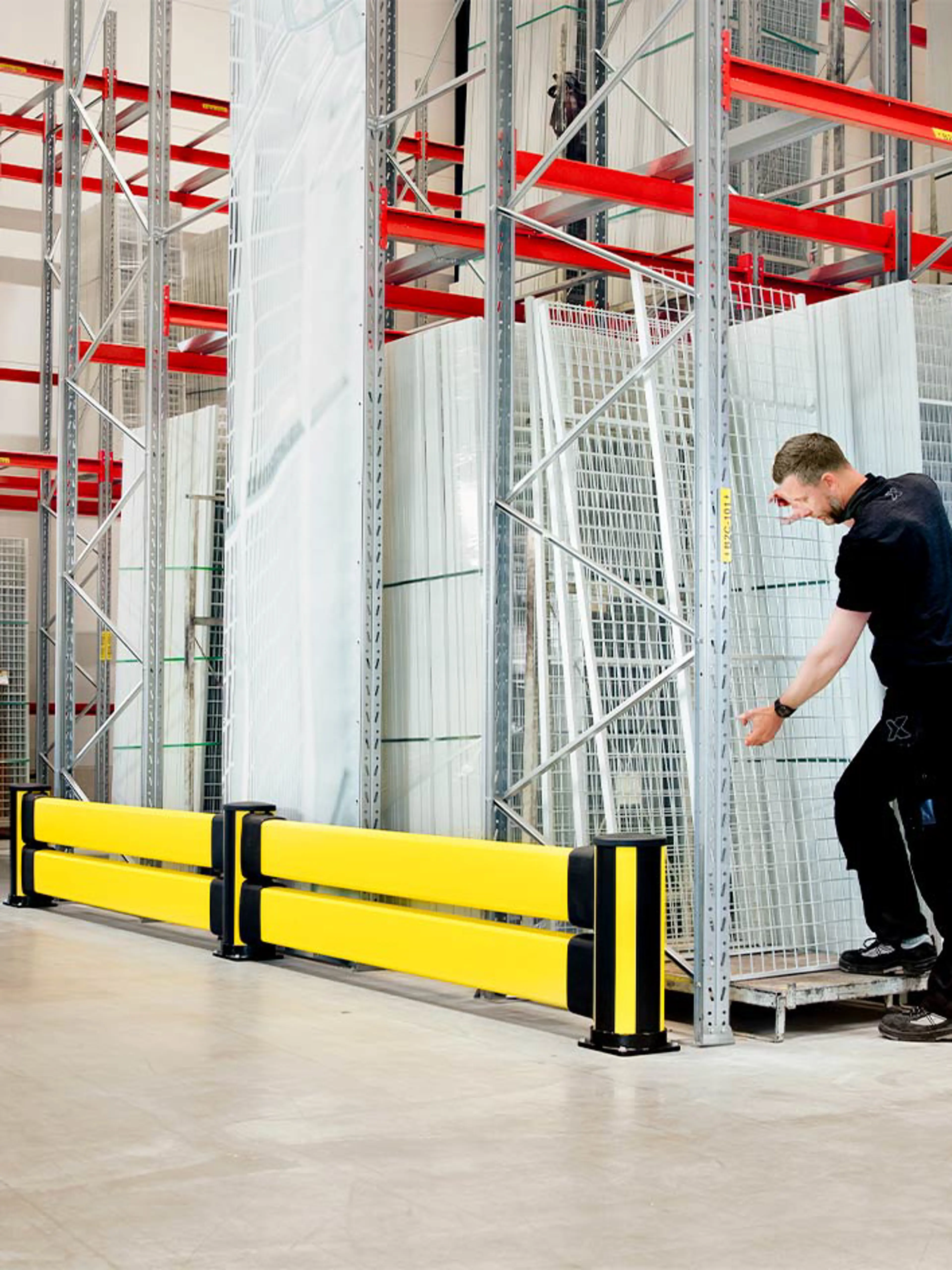Chapter 5.2
Impact protection
Traffic has always been a source of risk for people and sensitive equipment. Below, we explore the benefits of implementing impact protection in production and warehouse facilities.
Pedestrian and impact barriers
People are hit, crushed or even run over by industrial trucks, often with serious injury or death as the consequence.
In one European country alone 33834 accidents with industrial trucks and material transport carriages occurred in 2023. Eight people were killed, and 402 people injured serious enough to become accident pensioners ("Statistik Arbeitsunfallgeschehen 2023", DGUV). The enormous number of accidents is a good reason to look at your facilities and check what can be done to reduce risk. In some countries taking measures to prevent on-site traffic accidents are required by law.
Traffic has always created risks to humans, building infrastructure and equipment, both on the street and inside workplaces. People involved in accidents with trucks, AGV's, forklifts and other industrial traffic often come with serious injury or death. Meanwhile this traffic can also cause costly damages to buildings and assets such as columns, walls and other operation equipment.

Key considerations for on-site safety
Overall, there are key considerations when it comes to improving your on-site traffic safety including:
- Prepare floor layouts clearly indicating current traffic routes, workplaces and pedestrian walkways with barriers.
- Separate traffic routes and pedestrian areas wherever possible.
- Check the on-site walkways, observe current traffic, and assess the risks.
- Take risk reduction measures and explore the degree of risk.
- Prefer technical solutions over organizational measures


What is a Pedestrian Barrier?
A pedestrian barrier is a type of fencing that clearly defines the pedestrian route in an environment where vehicle traffic is present.
A pedestrian barrier can serve as an impact barrier at the same time if a collision was to occur, however the goal is to keep moving vehicles and people separate.
Some companies decide to stick with floor markings such as tape to differentiate between pedestrian walkways and traffic routes, however this can go unnoticed, and accidents can occur.
Better: Install pedestrian barriers that physically separate people from vehicles.
Where to install pedestrian barriers?
- Where there is a lack of space between parallel walkways and traffic lanes.
- High traffic areas, crossings, areas with impaired vision of traffic lanes.
- Doors opening toward a traffic lane. (Be sure not to place a crossing in the direct walking line of a door.)
- Either side of wall openings and automatic gates for truck passage. (Additionally, provide a door for pedestrians next to the truck passage/gate.)
- Workplaces near traffic lanes.

What is an Impact Barrier?
An impact barrier is a strong, protective post or bar that reduces costly damages to assets and injuries to staff. These barriers can come in a range of lengths, heights and sizes.
An impact barrier is not there to avoid impact, it is there to absorb the impact energy and protect from any collisions.
Within a warehouse environment, forklifts can cause costly damages to equipment and installations including pallet racks, compressor stations and cool rooms. These damages can put staff in danger, increase workplace downtime and cause costly replacements to the business.
Therefore, it is important to understand where impact barriers would be necessary to avoid these damages including:
- Face ends of racks
- Around the uprights of racks
- Around pillars that support ceilings, mezzanine floors or machinery and equipment
- At the entry points of truck aisles
- Around sensitive equipment near traffic routes
- Around workplaces near traffic routes
- At the bottom end of slopes and ramps leading onto traffic lanes or workplaces
- In front of glass walls and around office booths on the shop floor
- Along the perimeter of walls near traffic lanes
